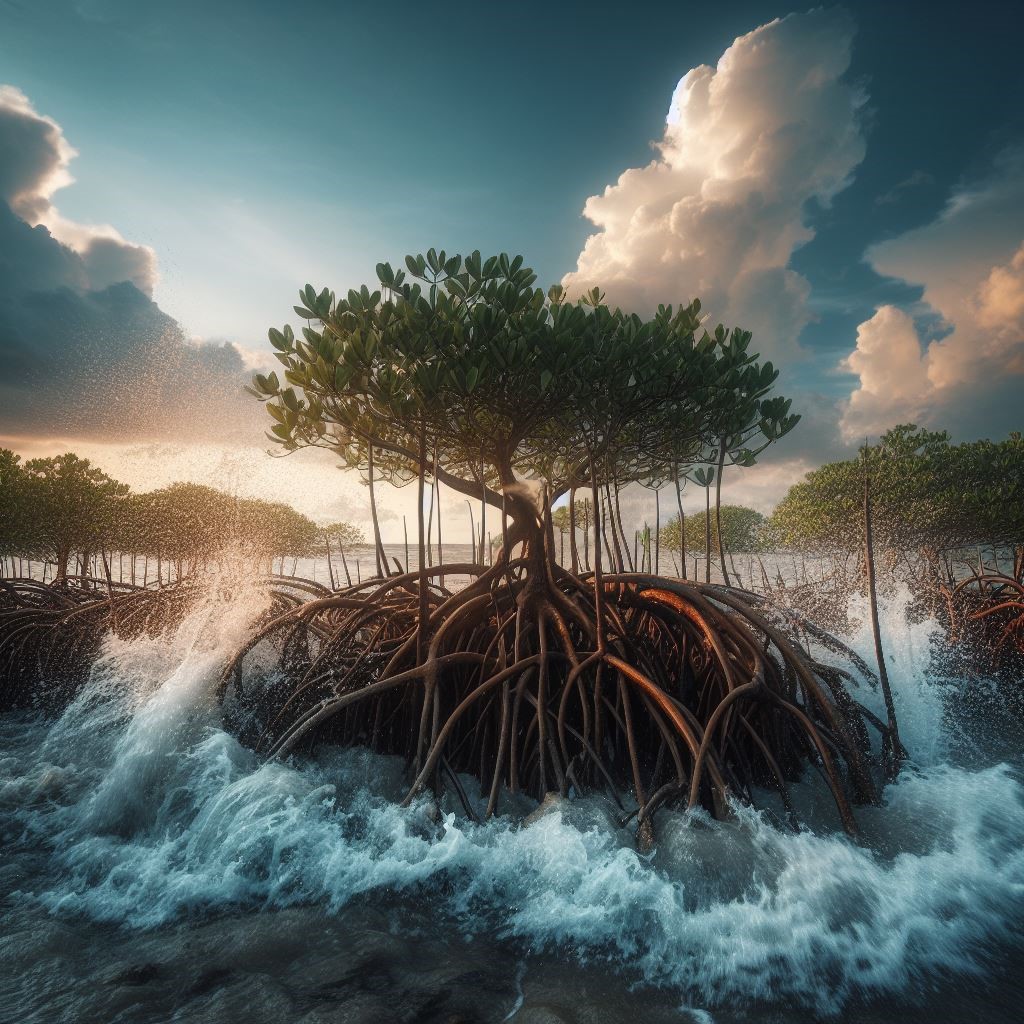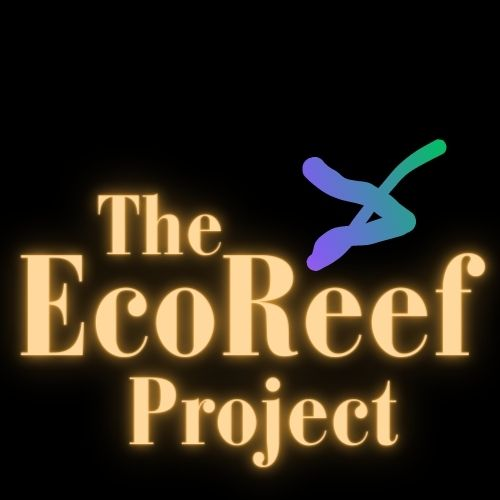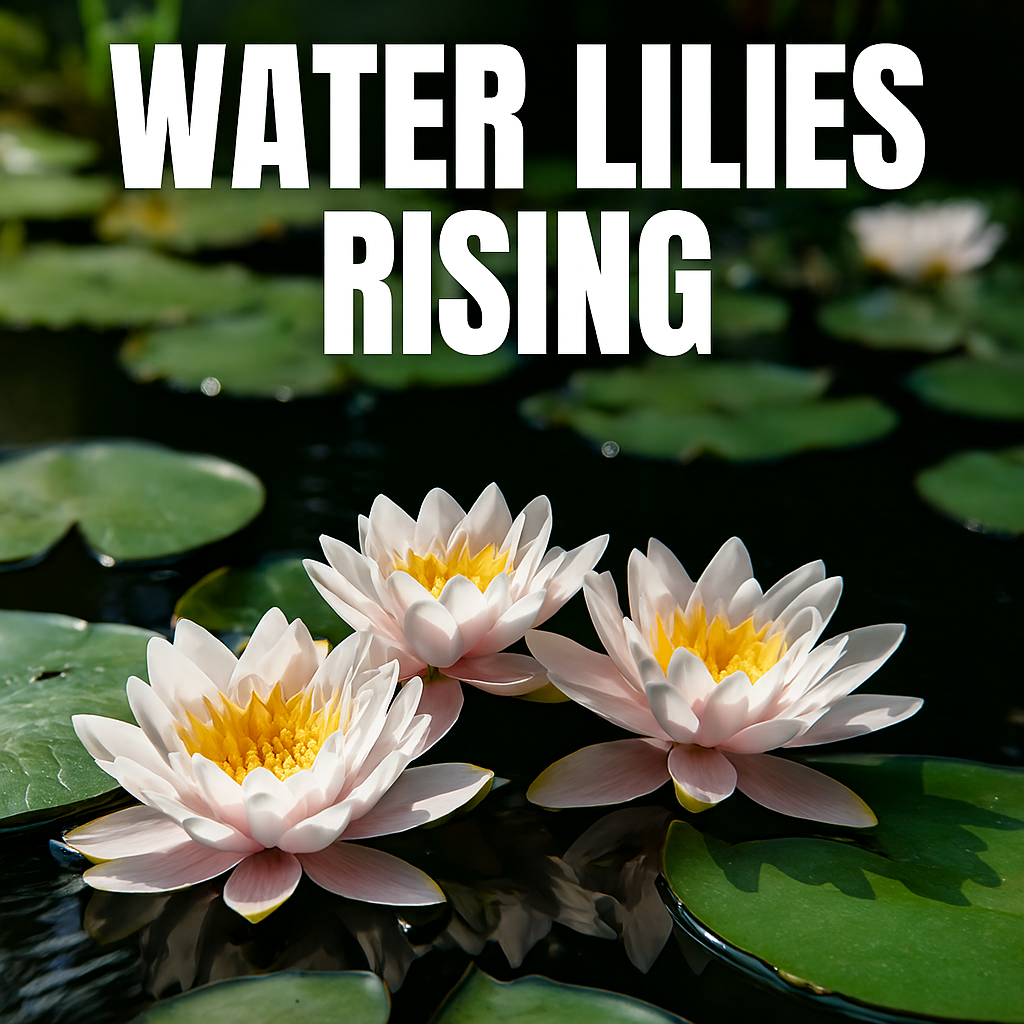Ocean Conservation Solutions
Reimagining the Ocean’s Future With Ocean Conservation Solutions
EcoReefProject.co is a platform where ecological design meets marine renewal. At its core is the EcoReef—a modular eco reef system built to restore biodiversity, protect coastlines, and repurpose waste into life-supporting architecture. This initiative transforms conservation from a reactive effort into a regenerative strategy.
The EcoReef is not a single structure but a living interfaceand it is a eco reef. It adapts to local marine conditions, offering shelter, stability, and biodiversity support. Each module is engineered to mimic natural reef forms while integrating recycled and organic materials. These materials are selected for durability, porosity, and ecological familiarity.
The project’s mission is rooted in three principles—restoration, resilience, and reuse. Restoration focuses on rebuilding damaged ecosystems. Resilience ensures long-term survival of marine life. Reuse transforms waste into habitat. Together, these principles guide every deployment.
EcoReef modules are designed to be scalable. They can be installed in shallow bays, deep coastal shelves, or urban waterfronts. Their flexibility allows for tailored ecological interventions. The goal is not just to protect but to regenerate.
This editorial explores the EcoReef’s design, materials, ecological impact, and future potential. Each section offers a deep dive into one aspect of the project. Tables anchor key insights. Paragraphs remain short, modular, and symbolically resonant.
EcoReefProject.co is more than a website—it’s a blueprint for oceanic renewal. It invites collaboration, experimentation, and stewardship. The reef is not static—it evolves. And so does the conversation around it.
Ocean’s Future And The EcoReef Project
Organic Materials – Nature’s Debris as Foundation
EcoReef modules begin with organic fragments—coral skeletons, seashells, and driftwood. These elements are chosen for their ecological familiarity and structural integrity. Coral fragments offer calcium-rich surfaces for polyps to settle. Seashells provide microhabitats and reflect local biodiversity. Driftwood adds complexity and mimics natural reef decay.
These materials are sourced sustainably. Coral fragments come from restoration zones. Seashells are collected during coastal cleanups. Driftwood is recovered after storms. Each piece is cleaned, cured, and shaped to fit the reef’s modular design.
Organic materials serve multiple roles. They attract marine life. They stabilize sediment. They reduce reliance on synthetic inputs. Their textures invite colonization. Their shapes mimic reef cavities. Their origins honor natural cycles.
The use of organic debris reduces ecological footprint. It avoids mining or industrial fabrication. It celebrates circularity. It turns waste into habitat. It transforms decay into renewal.
EcoReef modules are layered. Organic materials form the outer shell. Inside lies a recycled core. This dual structure balances familiarity with durability. It invites life while resisting erosion.
| Material | Ecological Role | Source Method | Symbolic Function |
|---|---|---|---|
| Coral Fragments | Settlement substrate | Restoration zones | Memory of reef collapse |
| Seashells | Microhabitat formation | Coastal cleanups | Echo of biodiversity |
| Driftwood | Structural mimicry | Storm debris recovery | Trace of tidal cycles |
Organic materials are not decoration. They are invitation. They are memory. They are promise.
Recycled Plastics – Waste Reimagined as Shelter
Beneath the organic layer, EcoReef structures incorporate recycled plastics. These materials are reshaped into porous, durable frameworks. They resist corrosion. They mimic reef cavities. They offer long-term habitat stability.
Plastics are sourced from ocean-bound waste streams. Fishing nets, bottles, and packaging are collected, sorted, and processed. They are molded into reef-like geometries. Crevices and tunnels are designed to attract marine life.
This approach diverts plastic from landfills and oceans. It transforms pollution into protection. It reclaims waste as architecture. It reimagines damage as design.
Recycled plastics are not hidden. They are celebrated. They symbolize transformation. They embody resilience. They challenge assumptions about material value.
EcoReef modules use multiple plastic types. HDPE forms the structural base. PET adds surface texture. Nylon connects flexible components. Each type serves a purpose. Each type tells a story.
| Plastic Type | Function in Reef | Source Stream | Symbolic Role |
|---|---|---|---|
| HDPE | Structural base | Coastal recycling | Backbone of resilience |
| PET | Surface texture | Urban waste | Skin of transformation |
| Nylon | Flexible connectors | Fishing gear recovery | Ligament of adaptation |
Recycled plastics in EcoReef modules are not compromise. They are commitment. They are continuity. They are courage.
Biodiversity Revival – Reefs as Living Archives
EcoReef installations rapidly attract marine species. Their layered design supports a range of organisms, from plankton to apex predators. Fish use tunnels for shelter and spawning. Crustaceans colonize crevices and feed on biofilm. Algae and coral polyps settle on textured surfaces.
The reef becomes a living archive of local biodiversity. Each module reflects its environment. Tropical reefs host vibrant fish and soft corals. Temperate zones attract kelp, mollusks, and hardy crustaceans. Arctic deployments support cold-water sponges and resilient invertebrates.
EcoReef modules are designed to evolve. As species settle, the reef changes. New textures emerge. New pathways form. The structure becomes dynamic. It adapts to seasonal shifts. It responds to ecological pressures.
Biodiversity is not decoration—it’s infrastructure. It stabilizes food webs. It filters water. It cycles nutrients. It buffers against collapse. EcoReef modules amplify these functions. They restore what was lost. They protect what remains.
| Species Group | EcoReef Interaction | Ecological Benefit | Symbolic Role |
|---|---|---|---|
| Reef Fish | Shelter and spawning | Population recovery | Pulse of renewal |
| Crustaceans | Foraging and nesting | Nutrient cycling | Architects of texture |
| Coral Polyps | Settlement substrate | Reef regeneration | Memory of resilience |
| Algae | Surface colonization | Oxygen production | Breath of the ocean |
| Mollusks | Filter feeding | Water purification | Voice of clarity |
EcoReef modules do not impose—they invite. They do not dominate—they host. They do not fix—they foster.

Coastal Defense – Erosion Meets Its Match
EcoReef structures are strategically placed to absorb wave energy and stabilize shorelines. Their modular form allows for tailored deployment. Reefs reduce wave force before it reaches the shore. Sediment is trapped and redistributed naturally. Shorelines regain shape and resilience.
Traditional seawalls often disrupt ecosystems. EcoReef modules offer a softer alternative. They blend with the seabed. They allow water to flow. They support life while protecting land. Their porous design diffuses energy. Their layered form redirects currents.
Coastal erosion is not just geological—it’s ecological. It affects nesting grounds. It threatens mangroves. It destabilizes communities. EcoReef installations address these layers. They buffer coastlines. They anchor habitats. They support regeneration.
Each deployment is site-specific. Engineers study wave patterns. Ecologists map species distributions. Designers shape modules to fit. The result is a reef that belongs. It does not intrude—it integrates.
| Coastal Issue | EcoReef Response | Outcome | Symbolic Function |
|---|---|---|---|
| Erosion | Wave energy absorption | Shoreline stabilization | Shield of memory |
| Sediment Loss | Flow redirection | Beach regeneration | Sculptor of renewal |
| Habitat Collapse | Biodiversity support | Ecosystem recovery | Cradle of resilience |
| Mangrove Threat | Buffer zone creation | Root system protection | Guardian of roots |
| Urban Flooding | Surge mitigation | Infrastructure safety | Wall of adaptation |
EcoReef modules are not barriers—they are bridges. They connect land and sea. They protect without isolating.
Modular Design – Flexibility in Form and Function
EcoReef modules are built for adaptability. Each unit can be reshaped, resized, and reoriented. This flexibility allows for deployment in diverse marine environments. Shallow bays, deep shelves, urban harbors—all can host EcoReefs.
Design begins with ecological mapping. What species live here? What currents flow? What sediments settle? These questions shape the module. No two reefs are identical. Each is a response. Each is a reflection.
Modularity supports scalability. Small installations test viability. Larger arrays expand impact. Networks of reefs form corridors. They connect habitats. They support migration. They amplify resilience.
Form follows function. Some modules emphasize shelter. Others focus on flow. Some mimic coral branches. Others resemble rocky outcrops. The design language is ecological. It speaks in textures, voids, and rhythms.
| Module Type | Primary Function | Deployment Zone | Symbolic Role |
|---|---|---|---|
| Branch Cluster | Coral mimicry | Tropical shallows | Echo of reef memory |
| Boulder Core | Wave absorption | Surf zones | Anchor of resistance |
| Tunnel Array | Fish shelter | Estuarine edges | Passage of renewal |
| Spiral Shell | Flow modulation | Sediment-rich bays | Vortex of adaptation |
| Grid Frame | Algae colonization | Urban waterfronts | Canvas of life |
EcoReef modules are not fixed—they are fluent. They speak the language of place. They listen before they build.
Community Engagement – Stewardship Beyond Installation
EcoReefProject.co is not a solitary endeavor. It thrives on collaboration. Local communities are invited to participate in every phase—design, deployment, monitoring, and storytelling. This engagement fosters ownership. It transforms conservation into culture.
Workshops teach reef ecology. Volunteers assist with module placement. Schools adopt reef zones. Artists document marine life. Scientists share data. The reef becomes a shared canvas. Its meaning multiplies.
Community involvement ensures longevity. It builds networks of care. It decentralizes expertise. It democratizes stewardship. EcoReef modules are not just installed—they are adopted.
Engagement also builds resilience. When storms hit, communities respond. When species shift, locals adapt. The reef becomes a living relationship. It evolves through dialogue.
| Engagement Type | Role in Project | Outcome | Symbolic Function |
|---|---|---|---|
| Volunteer Deployment | Physical installation | Ownership and pride | Handprint of care |
| School Partnerships | Education and monitoring | Generational continuity | Seed of awareness |
| Artist Collaborations | Visual storytelling | Cultural resonance | Mirror of meaning |
| Citizen Science | Data collection | Ecological literacy | Lens of observation |
| Local Stewardship | Maintenance and feedback | Adaptive resilience | Pulse of community |
EcoReef modules are not passive—they are participatory. They invite stories. They reflect values. They grow through connection.
Ecological Monitoring – Data as Dialogue
Every EcoReef installation is monitored. Sensors track temperature, salinity, and species presence. Divers record visual changes. Drones map sediment flow. Data becomes dialogue. It informs design. It guides adaptation.
Monitoring is modular. Some reefs use high-tech sensors. Others rely on human observation. Both are valid. Both reveal patterns. Both deepen understanding.
Data is shared openly. Researchers publish findings. Communities access dashboards. Artists interpret trends. The reef becomes a site of learning. It teaches through change.
Monitoring also reveals impact. Biodiversity increases. Erosion slows. Water clarity improves. These metrics validate the design. They justify expansion. They inspire replication.
| Metric Tracked | Monitoring Method | Ecological Insight | Symbolic Role |
|---|---|---|---|
| Species Count | Diver surveys | Biodiversity recovery | Pulse of life |
| Sediment Flow | Drone mapping | Shoreline stabilization | Rhythm of renewal |
| Temperature Shifts | Sensor arrays | Climate adaptation | Breath of change |
| Coral Growth | Time-lapse imaging | Habitat regeneration | Memory of resilience |
| Water Clarity | Spectral analysis | Pollution reduction | Lens of transformation |
EcoReef modules are not static—they are studied. They are questioned. They are refined.
Temporary Structures – Designed to Disappear
EcoReef modules are intentionally impermanent. They are built to biodegrade, disassemble, or be repurposed. This temporality honors ecological cycles. It avoids permanence. It respects change.
Some modules dissolve over time. Others are removed after recovery. Some are reconfigured for new habitats. This flexibility prevents ecological stagnation. It invites renewal.
Temporality also reduces risk. If a design fails, it can be removed. If species shift, modules adapt. If conditions change, the reef responds. Nothing is fixed. Everything flows.
EcoReefProject.co embraces this philosophy. Conservation is not about control—it’s about choreography. The reef dances with time. It listens to seasons. It yields to tides.
| Module Type | Lifespan | Decomposition Method | Symbolic Function |
|---|---|---|---|
| Biodegradable Shell | 2–5 years | Natural breakdown | Echo of impermanence |
| Recycled Core | 10+ years | Manual removal | Backbone of transition |
| Driftwood Frame | Seasonal | Tidal erosion | Trace of memory |
| Coral Scaffold | Permanent | Absorbed into reef | Seed of continuity |
| Modular Grid | Reconfigurable | Human-led adaptation | Map of possibility |
EcoReef modules are not monuments—they are moments. They are gestures. They are invitations.
Symbolic Storytelling – Meaning in Every Module
Each EcoReef installation tells a story. Its materials carry memory. Its shape reflects place. Its species embody resilience. The reef becomes a narrative. It speaks through texture. It sings through biodiversity.
Storytelling is layered. Scientists write reports. Artists create murals. Children name fish. Elders recall tides. The reef becomes a cultural artifact. It bridges generations.
Symbols matter. A shell is not just calcium—it’s history. A tunnel is not just shelter—it’s passage. A fragment is not just debris—it’s continuity. EcoReef modules honor these meanings.
Storytelling also protects. When people care, they defend. When they remember, they restore. When they share, they sustain. The reef becomes a keeper of values.
| Symbolic Element | Ecological Role | Cultural Meaning | Emotional Resonance |
|---|---|---|---|
| Coral Fragment | Settlement substrate | Memory of collapse | Hope through healing |
| Driftwood Tunnel | Shelter and flow | Passage of resilience | Safety in motion |
| Seashell Mosaic | Microhabitat texture | Echo of biodiversity | Beauty in detail |
| Recycled Plastic Core | Structural integrity | Transformation of waste | Courage in change |
| Algae Bloom | Oxygen production | Breath of renewal | Life in silence |
EcoReef modules are not just structures—they are stories. They are symbols. They are songs.
Future Expansion – Scaling with Integrity
EcoReefProject.co is expanding. New coastlines are being mapped. New species are being studied. New materials are being tested. The reef evolves. It grows with care.
Expansion is not replication—it’s adaptation. Each site is unique. Each community is different. Each ecosystem has its own rhythm. EcoReef modules respond, not impose.
Partnerships guide growth. Universities offer research. Governments provide permits. NGOs support logistics. Artists shape design. The reef becomes a network. It connects disciplines. It bridges sectors.
Scaling also requires humility. Mistakes are studied. Failures are shared. Successes are celebrated. The reef teaches through iteration. It grows through feedback.
| Expansion Strategy | Role in Growth | Outcome | Symbolic Function |
|---|---|---|---|
| Site Mapping | Ecological assessment | Tailored deployment | Compass of care |
| Material Innovation | Testing new inputs | Enhanced resilience | Palette of possibility |
| Community Outreach | Local engagement | Stewardship and pride | Thread of connection |
| Interdisciplinary Teams | Collaborative design | Holistic impact | Weave of wisdom |
| Feedback Loops | Monitoring and revision | Adaptive learning | Mirror of humility |
EcoReef modules are not finished—they are beginning. They are seeds. They are scaffolds.











Leave a Reply